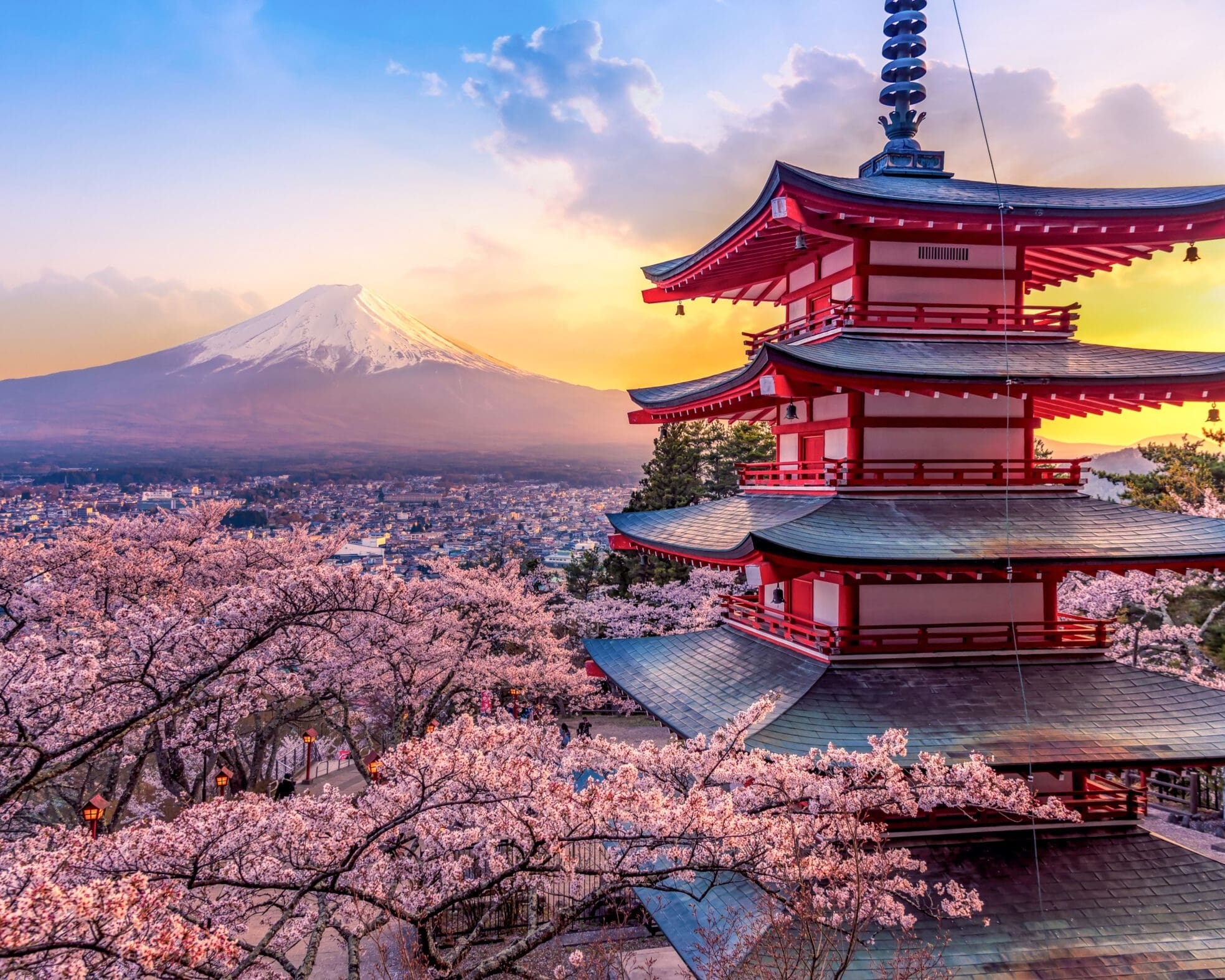Step into a world where ancient traditions blend seamlessly with cutting-edge innovation. Japan, a land of endless discovery, invites you to immerse yourself in its rich tapestry of history, culture, and technology.
From the tranquil beauty of cherry blossoms in Kyoto to the neon-lit streets of Tokyo, every moment in Japan is a step into the future entwined with a deep reverence for the past. Experience the meticulous art of tea ceremonies, the adrenaline rush of bullet trains, and the serene majesty of Mount Fuji.
Japan is not just a destination; it’s a journey through a living dichotomy where every detail tells a story. Welcome to Japan, where every visit is a masterpiece waiting to unfold.

The Best Time To Visit
The best time to visit Japan largely depends on what experiences you’re looking for, but generally, spring (March to May) and autumn (September to November) are considered the ideal times to explore the country. Spring is celebrated for the iconic cherry blossom season, where landscapes across Japan are painted in delicate shades of pink and white, creating a truly magical atmosphere. The weather is pleasantly warm, and the mood is festive, with hanami (cherry blossom viewing) parties taking place everywhere.
Autumn, is marked by koyo (autumn leaves), where the foliage turns into vibrant hues of red, orange, and yellow, offering breathtaking scenery, especially in the parks and in the countryside.
Additionally, these periods avoid the summer’s heat and humidity and the winter cold, which some travelers may find challenging. However, these are also popular times for both international tourists and locals, so planning ahead and booking accommodations early is advised.
What To Know
In Japan, the primary language spoken is Japanese. English is taught in schools as a second language, but the level of English proficiency among the general population varies. In major cities and tourist areas, signs and information are often available in English, and you’re more likely to encounter English-speaking staff in hotels, major stores, and transportation hubs. However, in rural areas, English speakers might be less common, making basic Japanese phrases a helpful tool for communication.
The currency used in Japan is the Japanese Yen, abbreviated as JPY or symbolized by ¥. It’s the only currency widely accepted across the country for all forms of transactions, from dining and shopping to transportation and accommodation. The Yen comes in both coins and banknotes. For travellers, it’s important to note that Japan has traditionally been a cash-preferred society, though credit card acceptance is increasing, especially in urban areas and popular tourist destinations. Nonetheless, carrying some cash is advisable, particularly when visiting smaller towns, rural areas, or establishments like small restaurants and markets.
Japan is renowned for its safety, consistently ranking as one of the safest countries in the world. Crime rates are remarkably low, and violent crime is especially rare. This extends from bustling urban centers like Tokyo and Osaka to the serene countryside, making it a secure destination for travelers.
However, Japan is not without its risks. Natural disasters, such as earthquakes, tsunamis, and typhoons, can occur. The country is well-prepared for such events, with robust infrastructure and comprehensive emergency response plans. Visitors should stay informed about local conditions and follow any government advisories.
Public transport in Japan is renowned for its efficiency, punctuality, and coverage, making it one of the most convenient ways to travel around the country. The network includes a comprehensive system of trains, subways, buses, and domestic flights, catering to virtually every corner of the nation.
Trains, particularly the Shinkansen (bullet trains), are a hallmark of Japanese transport, offering fast and reliable connections between major cities. Urban areas boast extensive subway and commuter train networks, with Tokyo and Osaka being prime examples. These systems are known for their regularity and ease of use, although they can get crowded during rush hours.
Buses complement the train services, providing access to areas less serviced by rail, including remote rural regions. They’re an essential mode of transport within cities and for reaching destinations like national parks and scenic countryside areas.
Japan’s public transport is user-friendly for visitors, with many signs and announcements available in English. Payment is streamlined through the use of prepaid IC cards like Suica and Pasmo, which can be used across different types of transport in many cities. Despite the language barrier, the system’s organization and the helpfulness of staff and locals make navigating Japan’s public transport a smooth experience for travelers.
Japan Travel Guides
November 26, 2024
12 Delicious Winter Foods In Japan
March 8, 2024
The 10 Best Day Trips from Tokyo
March 7, 2024
The 20 Best Things To Do In Tokyo
March 4, 2024
Where to Find the Best Sushi in Tokyo
March 3, 2024
10 Of The Best Beaches Near Tokyo
February 12, 2024
The 10 Best Museums in Japan
July 21, 2023
The 20 Best Things To Do In Japan
July 13, 2023
The Best Time To Visit Japan
July 12, 2023
